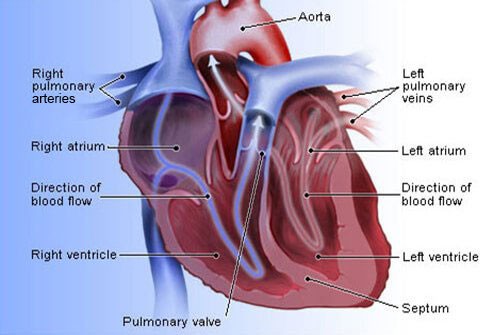
Recently Diagnosed or Relapsed? Stop Looking For a Miracle Cure, and Use Evidence-Based Therapies To Enhance Your Treatment and Prolong Your Remission
Multiple Myeloma an incurable disease, but I have spent the last 25 years in remission using a blend of conventional oncology and evidence-based nutrition, supplementation, and lifestyle therapies from peer-reviewed studies that your oncologist probably hasn't told you about.
Click the orange button to the right to learn more about what you can start doing today.
- You are here:
- Home »
- Blog »
- Multiple Myeloma »
- Cardiovascular Events Due to Stem Cell Transplant
Cardiovascular Events Due to Stem Cell Transplant

Cardiovascular events occuring after stem cell transplant have been known for years. The study linked and excerpted below gives specific risk data for the many types of cardiovascular side effects that happen to cancer patients who undergo autologous stem cell transplantation.
I am a long-term survivor of a blood cancer called multiple myeloma. I had induction therapy and an autologous stem cell transplant all in 1995. I was diagnosed with chemotherapy-induced cardiomyopathy in late 2010.
The statisticts below stop being tracked at 1, 5 and 10 years. 20% of patients who have an ASCT will suffer from some sort of heart damage after 10 years. I believe that cancer patients who undergo autologous stem cell transplants experience heart damage if they were tracked for more than 10 years.
If you’ve had an autologous stem cell transplant, my experience indicates that you very well could develop cardiovascular disease sometime in the future. I encourage you to take therapeutic steps to reduce your risk of long-term CV disease by:
- Heart healthy nutrition (Mediterranean diet)-
- Heart healthy nutritional supplementation-
- Heart healthy lifestyle therapies-
If you would like to learn more about the evidence-based non-conventional heart healthy therapies listed above send me an email-
David.PeopleBeatingCancer@gmail.com
Hang in there,
David Emerson
- MM Survivor
- MM Cancer Coach
- Director PeopleBeatingCancer
Cardiovascular Events After Hematopoietic Stem Cell Transplant: Incidence and Risk Factors
Background- Hematopoietic stem cell transplantation (HSCT) is associated with various cardiovascular (CV) complications.
Results- In 3,354 patients (mean age 55 years; 40.9% female; 30.1% Black) followed for a median time of 2.3 years (Q1-Q3: 1.0-5.4 years), the 100-day and 5-year cumulative incidences of CV events were 4.1% and 13.9%, respectively.
Atrial fibrillation/flutter was the most common short- and long-term CV event, with a 100-day incidence of 2.6% and a 5-year incidence of 6.8% followed by heart failure (1.1% at 100 days and 5.4% at 5 years).
Allogeneic recipients had a higher incidence of long-term CV events compared to autologous recipients (5-year incidence 16.4% vs 12.1%; P = 0.002). Baseline CV comorbidities were associated with a higher risk of long-term CV events…
- CV complications such as
- cardiomyopathy,
- arrhythmias,
- acute thrombosis,
- pulmonary hypertension,
- and pericardial effusions
are among the potential adverse events that occur after HSCT.3Long-term CV complications of HSCT, such as heart failure and atherosclerotic disease, are increasingly recognized as survival improves.
Incidence of overall CV events by transplant type
Overall, 133 (4.0%) and 312 (10.2%) short- and long-term CV events occurred, respectively, over a median follow-up time of 2.3 years (Q1-Q3: 1.0-5.4 years). In autologous recipients, the cumulative incidence of CV events at 1, 5, and 10 years was 5.5%, 12.1%, and 20.0%, respectively.
Allogeneic recipients had higher cumulative incidences of CV events at 1, 5, and 10 years, with rates of 7.7%, 16.4%, and 21.9%, respectively (Table 2). There was no difference in the incidence of short-term CV events between transplant types (P = 0.77) (Figure 1). However, allogeneic recipients had a higher incidence of long-term CV events compared to autologous recipients (P < 0.001) (Figure 1). Similar incidence rates of CV events by transplant type were observed between institutions (Supplemental Figure 1).
Cardiovascular Management of Patients Undergoing Hematopoietic Stem Cell Transplantation: From Pretransplantation to Survivorship:
“Abstract- Hematopoietic stem cell transplantation can cure various disorders but poses cardiovascular risks, especially for elderly patients and those with cardiovascular diseases. Cardiovascular evaluations are crucial in pretransplantation assessments, but guidelines are lacking.
This American Heart Association scientific statement summarizes the data on transplantation-related complications and provides guidance for the cardiovascular management throughout transplantation.
Hematopoietic stem cell transplantation consists of 4 phases:
- pretransplantation workup,
- conditioning therapy and infusion,
- immediate posttransplantation period,
- and long-term survivorship.
Complications can occur during each phase, with long-term survivors facing increased risks for late effects such as:
- cardiovascular disease,
- secondary malignancies,
- and endocrinopathies.
In adults, arrhythmias such as atrial fibrillation and flutter are the most frequent acute cardiovascular complication.
Acute heart failure has an incidence ranging from 0.4% to 2.2%. In pediatric patients, left ventricular systolic dysfunction and pericardial effusion are the most common cardiovascular complications.
Factors influencing the incidence and risk of complications include:
- pretransplantation therapies,
- transplantation type (autologous versus allogeneic),
- conditioning regimen,
- comorbid conditions,
- and patient age.
The pretransplantation cardiovascular evaluation consists of 4 steps: (1) initial risk stratification, (2) exclusion of high-risk cardiovascular disease, (3) assessment of cardiac reserve, and (4) optimization of cardiovascular reserve.
Clinical risk scores could be useful tools for the risk stratification of adult patients. Long-term cardiovascular management of hematopoietic stem cell transplantation survivors includes optimizing risk factors, monitoring, and maintaining a low threshold for evaluating cardiovascular causes of symptoms.
Future research should prioritize refining risk stratification and creating evidence-based guidelines and strategies to optimize outcomes in this growing patient population.”


